These squishy bags are a great, mess free way to experiment with mixing colours ad colour theory. After we’d finished experimenting making different colours we put a sheet of card inside each paint filled bag, sealed them up again and used them to practice forming letters and numbers with our fingers.
Here at Science Sparks we’re trying to reduce the amount of plastic we use, so do wash out the bags and save for another activity once you’ve finished.
Materials
Small sealable plastic sandwich bags
Red, yellow and blue washable paint
Small sheets of cardboard/stock
Instructions
Place a two small blobs of different coloured paint into each bag.
Carefully seal the bag and gently squish the colours together until they mix. You should find:
Yellow + Blue = Green
Red + Yellow = Orange
Blue + Red = Purple
Once you’ve finished experimenting place a small sheet of card inside each bag and carefully seal it up again.
Try writing letters and numbers on the surface of your bag, wipe the surface clean and then try again.
Mixing colours – why does this work?
What are primary colours?
Primary colours cannot be created by mixing other colours together.
Red, Yellow and Blue
Secondary colours are made by mixing primary colours.
Tertiary colours are made by mixing a primary colour with a secondary colour.
Always supervise small children when using paint and plastic bags
Last Updated on February 29, 2020 by Emma Vanstone

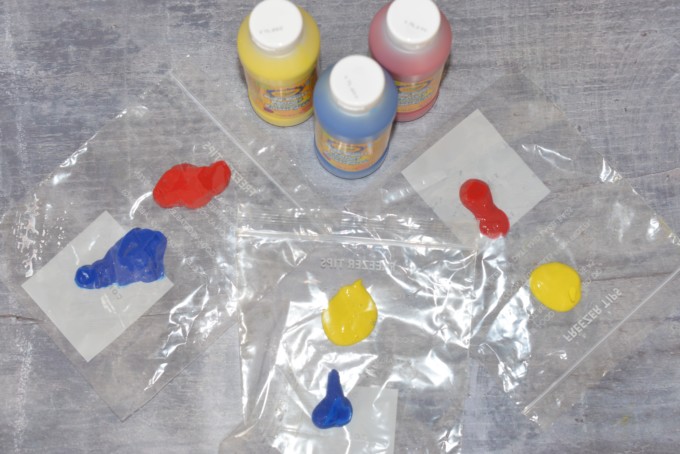
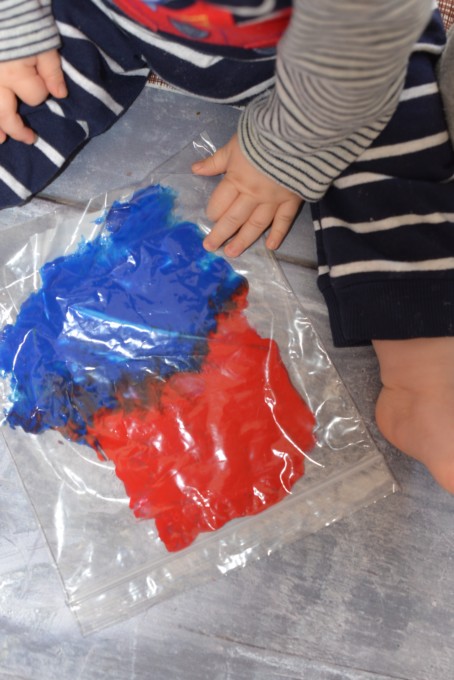
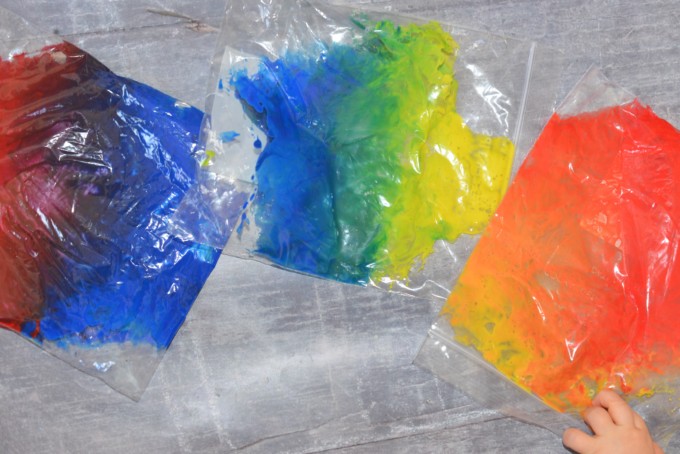
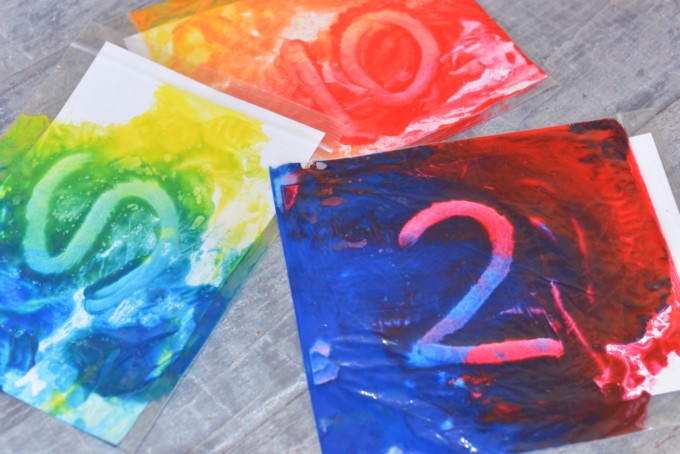
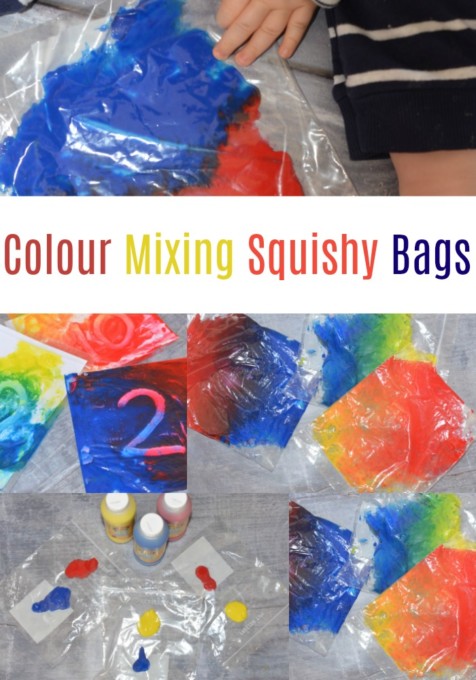
A new way to mix colors, I’ll try at home this afternoon, thanks for sharing <3